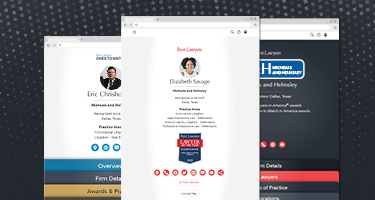We’ve all encountered highway congestion and slowdowns caused by road work. With narrowed lanes, merging traffic, and cars travelling at varying speeds, road construction zones are the scene of many crashes. Nearly a third of work zone accidents involve large trucks.
The National Work Zone Safety Information Clearinghouse says there were 672 fatal crashes in construction zones across the country in 2018. Of that total, 203 (30%) involved trucks. Fatal truck accidents in construction zones caused 228 deaths in 2018 and 236 each year on average from 2015-2017.
There were an estimated 18,000 construction zone crashes involving large trucks in 2017 and 2,000 of them (11%) caused 4,000 injuries, according to the Clearinghouse, which operates in cooperation with the U.S. Federal Highway Administration and Texas A&M Transportation Institute.
A construction zone is likely to require closed traffic lanes and detours or temporary changes in traffic flow that cause bottlenecks and slowdowns. Significant traffic backups due to construction zones are more likely to occur during weekday rush hours, and construction projects are more likely in warmer weather.
To be safe, a construction zone must be set up to control traffic as it moves through the designated work area and to keep traffic separated from workers, equipment and construction materials.
Typically, a highway construction zone is designed with four sections:
Advance warning area, with signs and/or flaggers alerting drivers to the work zone ahead
Transition area where traffic is diverted away from construction work by barriers, channeling devices, signs and/or lights
Activity area, with traffic space, buffer space and protected workspace for workers, equipment and storage.
Termination area, which allows traffic to increase speed and resume its normal route.
In some cases, travel through a construction zone is controlled by flaggers and/or lead vehicles that control the start, stop and flow of traffic through the zone.
Negligent Truck Drivers Cause Construction Zone Accidents
Construction zone accidents involving large commercial trucks such as semis and tractor-trailers are typically caused by a truck driver’s error. Traffic conditions and changes in the roadway encountered in a construction zone can cause problems for a trucker who is inattentive, driving too fast for road conditions or following another vehicle too closely.
Investigations into truck accidents that occur in construction zones typically conclude that the accident was due to one or more of the following causes:
Speeding. A truck that is going too fast may not have room to slow or come to a stop when encountering a construction zone. On a dry, level road, a large truck fully loaded traveling at 55 mph needs almost 50% more room than a passenger car needs to stop. At 40 mph, it needs 36% more roadway than a car.
Tailgating. Following too closely often leads to rear-end collisions. Tailgating is more dangerous in shifting traffic conditions because the driver of the lead car may brake unexpectedly, which increases the potential for a rear-end collision. Truckers may tailgate without thinking about it or to intimidate the driver ahead into speeding up, which is recklessness.
Inattention / Distracted Driving. A truck traveling 60 mph covers 88 feet (almost 30 yards) per second. Even a second or two of delay in how quickly a trucker recognizes that he or she needs to brake for slowing traffic entering a construction zone can cause calamity. Truck drivers can be distracted by cellphones, passengers, mapping apps, or food and drink.
Fatigue. Long-haul truck drivers work long hours and are often fatigued despite federal Hours of Service (HOS) regulations designed to limit the hours they spend behind the wheel. Fatigue impairs a driver’s ability to recognize and react to changing situations, which can result in late braking or gear changes necessary to slow a truck for a construction zone.
Late Merging. Large commercial trucks have larger blind spots than passenger cars, which can make it more difficult to see other vehicles when attempting to merge lanes. Truckers who fail to merge well in advance of lane closures can cause crashes as they and other drivers seek position in merging lanes.
In a few cases, an investigation may conclude that improper design of the construction zone contributed to a truck accident. Guidance for the set-up of construction zone signs, barricades and flagging are found in the U.S. Department of Transportation’s “Manual on Uniform Traffic Control Devices (MUTCD).” The manual is well-known in the industry for defining the standards used nationwide to install traffic control signage and Chapter 6 addresses temporary traffic control measures and work zones.
Protecting Your Legal Rights After Being Hit by a Truck
All motor vehicle drivers should be alert for changes in traffic required by highway construction zones. Passenger car drivers should slow and merge quickly and try to stay clear of large trucks. To the extent possible, cars should stay out of a tractor-trailer’s blind spots, which extend for two lanes to the right of a truck and 20 and 30 feet in front of and behind the vehicle.
Drivers who find themselves injured in collisions that involve commercial trucks should speak to a personal injury lawyer who has experience with truck accidents. Trucks are often owned by large companies. Some semis are owned by the truck driver, who will be referred to as an “independent operator.” The difference between the two can have a significant impact on a claim for compensation, which you have a right to seek if the truck driver’s negligence caused your injuries.
Sorting out the ownership of the truck and an employer’s responsibility for a truck driver who has caused an accident requires an experienced truck accident lawyer. Trucking companies and their insurers may deny liability or offer accident victims quick settlements that do not reflect the seriousness of the victim’s injuries.
If a faulty work zone contributed to the accident, the contractor and the local government responsible for the roadway may be held liable. Accident claims against governmental entities typically involve issues of governmental immunity and strict notification deadlines of pending claims. That can leave accident victims without recourse if they fail to contact an attorney promptly.
An accident victim is well advised to seek the guidance of an experienced truck accident lawyer who has handled cases against commercial carriers and understands the complexities of these cases. If a law firm can pursue a truck accident claim, it will do so on a contingency fee basis, meaning the accident victim does not pay a legal fee unless their attorney recovers compensation for them.
















